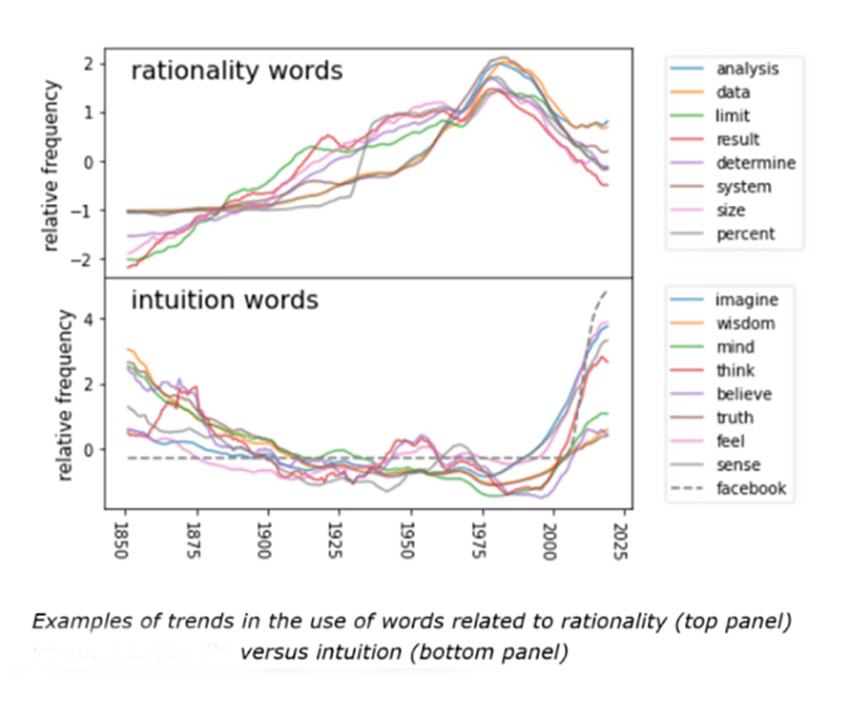The researchers did a word analysis using Google’s Ngram for millions of scanned books from 1850 to 2019, categorizing words as “rationale,” i.e., determine or conclusion, or as experiential, experienced, i.e., feel or believe.

The use of “rationale” words increased from the mid-1800s till the 1980s. These findings held for both fiction and non-fiction and for articles published by the New York Times. For a while, there was an equipoise between rationale and intuitive words. But as the graph depicts, the use of emotional, intuitive words accelerated in about 2007. That coincided with the rise of social media.
“This pattern [rationale over intuitive word choices] reversed in the 1980s, and this change accelerated around 2007, when across languages, the frequency of fact-related words dropped while emotion-laden language surged, a trend paralleled by a shift from collectivistic to individualistic language.”
Source: The rise and fall of rationality in language Proceedings of the National Academy of Science (PNAS) DOI: 10.1073/pnas.2107848118




